

The workplace is not what It used to be. New office spaces, even in India, are being designed with the employee as the central focus. The idea is to create an environment that fosters creativity and innovation through a combination of work, leisure and comfort, which eventually would lead to higher productivity.
- By Gretchen Ferrao Walker
“The design fraternity is teaming up with well-being experts to craft spaces that lay emphasis on better air quality, regulated noise levels and natural lighting.”
One Lodha Place is designed by New York’s Pei Cobb Freed & Partners.
OFFICE-LIFE
In 2018, The fellowes Workplace Wellness Trend Report, an annual study by the British office products company, revealed that 87 per cent of employees want healthier workspace benefits. The options ranged from sit- stands and ergonomic seating to wellness rooms, healthy meals, flexible workspaces and company fitness benefits.
It seems only logical, considering today’s always-on-work culture that has the average professional spending 40 hours-a-week (if not more) on the job. It is also telling of a more health- conscious worker demographic that’s seeking workplace wellness rather than purely fitness. A survey carried out by British retailer Furniture123.co.uk said a little more than half (53 per cent) of job seekers would turn down a role if the workplace design and environment weren't up to scratch.
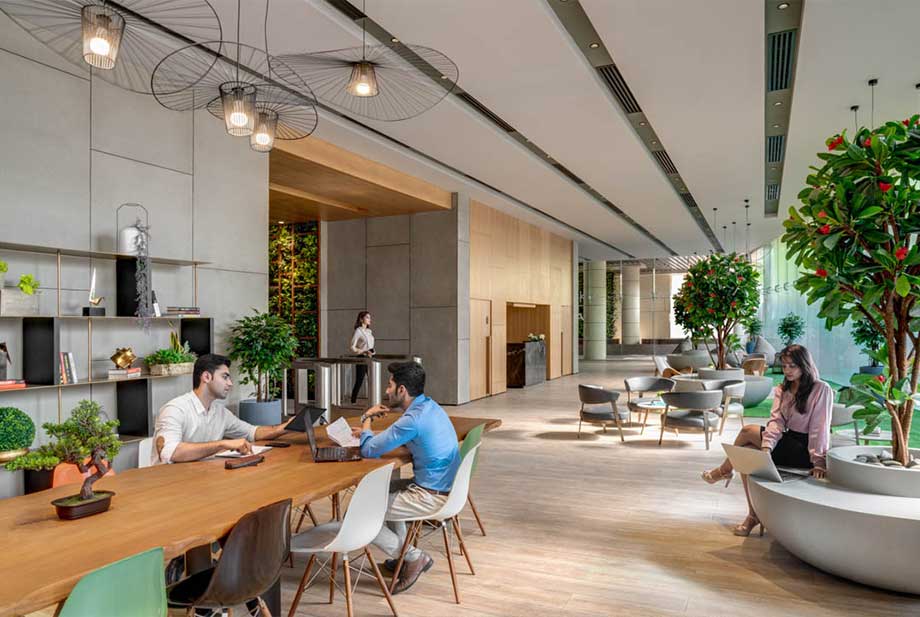
Before we look at the aspects that define today’s office design, we must understand how the way we do business has evolved. UK-based environmental psychologist Dr Nigel Oseland calls this the ‘Quarternary’ period in the workplace — a new economic age where creativity and innovation are key to maintaining a company’s competitive edge.
A generational shift and advances in technology call for a dynamic work environment that influences the whole employee experience.
As more businesses realise that people are their biggest asset, there’s greater investment in office design, facilities and conditions for maximum performance and well-being. “Organizations are increasingly looking to work out of spaces that are functional and efficient while being comfortable and classy. The definition of work has evolved and is about staying flexible while being able to connect and network,” says Francois Gramoli, Creative Director, We Work India, a network of co-working and flexi workspaces.
In today’s context, shaping an effective workplace is about more than rethinking its architecture. It requires designers and employers to look holistically at the organization's culture, its criteria for success, and its place in the world. The Mumbai team of global design and build firm Space Matrix agrees that eye-candy workspaces are on their way out. Taking their place are tech-enabled, people-centric designs, which aim to influence employee productivity, engagement and eventually, retention.
While many a work trend story has focussed on the needs of the millennial, internationally renowned workplace strategist Neil Usher cautions against the short-sightedness of this approach. “The ideal workplace is a blend of all generations considered equally and fully — experience and insight interwoven with energy and ambition,” says Usher, who is Chief Workplace Officer at GoSpace, a unique cloud-based AI set-up that dynamically allocates team space.
The architecture of wellness
The design fraternity is progressively teaming up with psychologists, neuroscientists and well-being experts to craft spaces that work for the worker. At its most basic level, this translates to offices which emphasize comfort, better air quality, regulated noise levels and natural lighting. Usher, who authored The Elemental Workplace (published 94 by SAGE in India), a solution-oriented approach to office design, says, “A workplace succeeds or fails in the minutiae, which is why washrooms and storage feature as two of the twelve elements [of my book]. Each of the 12 elements reduces to the highly personal, however important they are on a grand scale.”
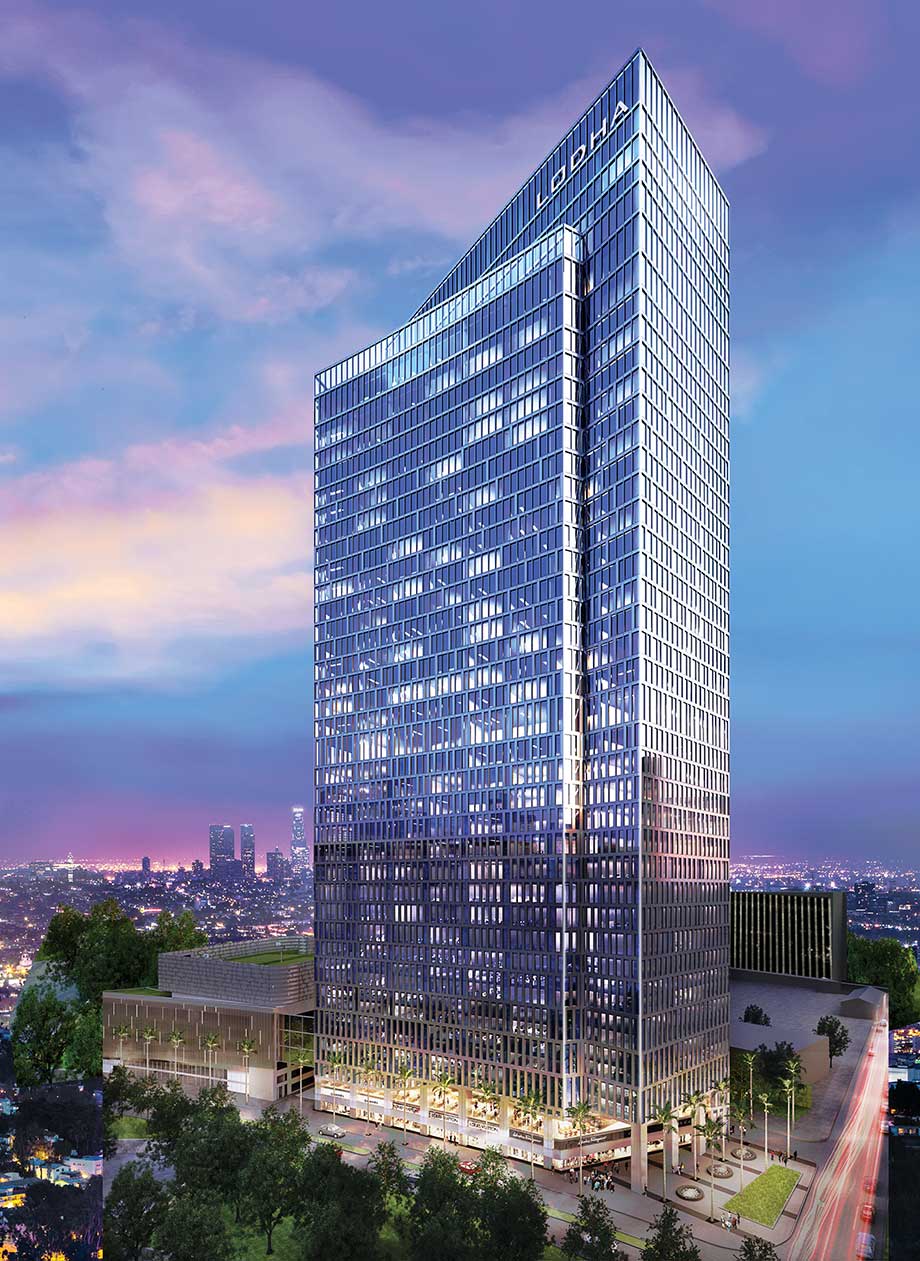
A recent report, developed by Japanese electronics multinational Sharp and Dr Oseland, says increased fresh air and good lighting in offices and meeting rooms could boost worker performance by 20 per cent and 15 per cent respectively. Also, employees in offices with windows reported 46 minutes more sleep at night compared to those without them. Biophilic design [an architectural concept used to increase occupant connectivity to the natural environment} psychologically feels good, but has also been shown to help with restoration and enhanced performance, both for creativity and focussed work,” explains Oseland. Space Matrix, for instance, brings the outdoors in via daylight, living walls, exposed brickwork and handmade heritage tiles.
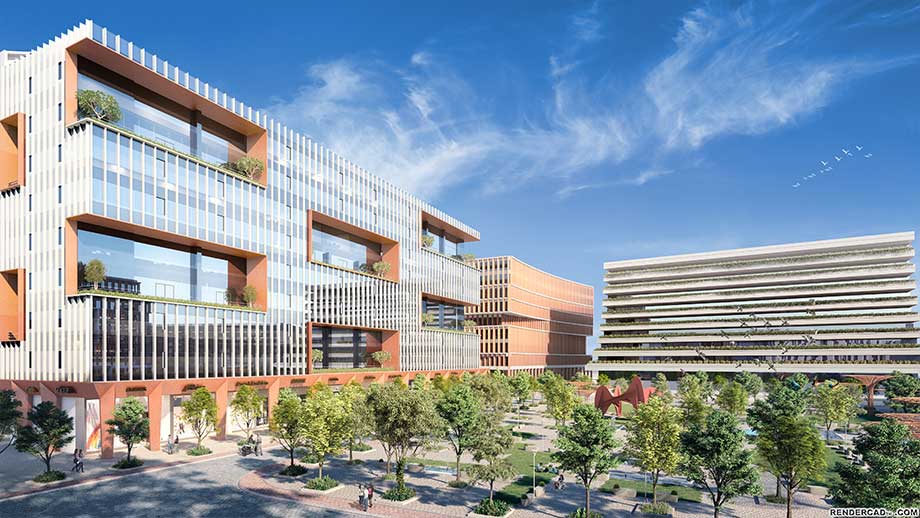
Stepping towards sustainability
Siddhartha Gupta, CEO of Gurgaon-based online talent assessment firm Mercer | Mettl talks about how compensation and benefits are just table stakes for small and mid-size businesses. For high- performing individuals, the work environment is equally a deciding factor while taking up a job. He adds, “Employees want to associate themselves with their brand and its vision, and fulfil personal aspirations through consistent support.”
Bathroom solutions company Jaquar’s focus on sustainability is highlighted by the location and architecture of its corporate headquarters in Manesar, Haryana. The glass building sits on a plateau, cushioned by landscaped gardens and water bodies. Besides its people- centric interior design, the company’s commitment to wellness for the planet is visible in its LEED Platinum- certified structure. With net zero power consumption, it boasts recycling facilities for water and waste.
At the Palava Business District, in the Palava City by Lodha, a mix-use development in Maharashtra, sustainability takes centre stage. The effort has been to create a sustainable eco-system. Solar panels that are fitted across all office buildings and most amenity buildings generate a solar photovoltaic (PV) capacity of over 2.;MWp. Total water recycling, along with rainwater harvesting facilities, results in 50 per cent lower water usage. Additionally, the 4-star BEE-rated and/or Gold LEED rated buildings ensure a 33 per cent savings in electricity costs. Intercity transportation is green too, with multiple cycling stations, including 30+ fitness cycles and 30+ electric cycles. Electric vehicle charging stations, currently deployed at Palava Phase 1, are available for commercial tenants. The place is as important as space for today’s employee looking to strike the right work-life balance. Oseland, who has conducted almost 100 post-occupancy evaluations, confirms that you get a sense of how well the workplace works even before a visit. Some cues include: location, easily available directions, accessibility to public transport, hospitality and security on arrival, etc. Tapping into this need is a slew of mix-use real estate developments that offer walk-to-work (or play) options. At the Palava Business District, in Palava City, a mixed-use development in Maharashtra, sustainability takes centre stage.
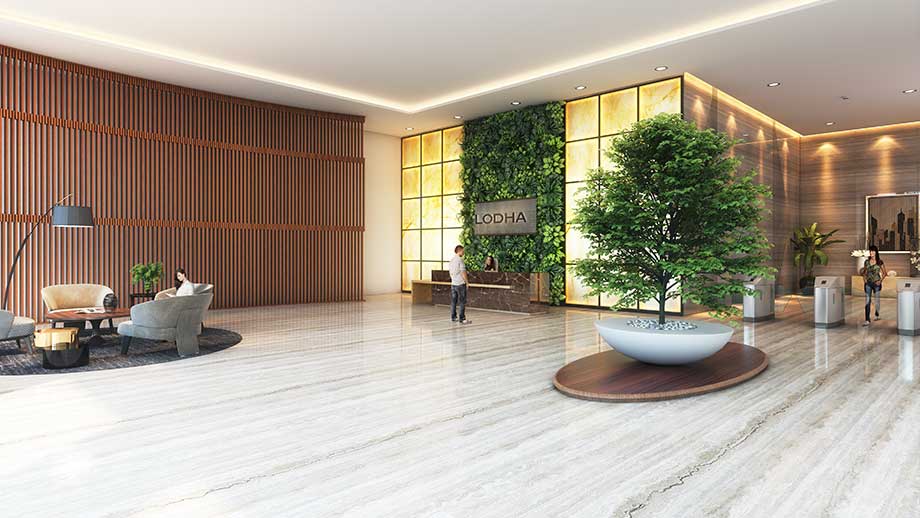
Tapping into this need is a slew of mix-use real estate developments that offer walk-to-work (or play) options.
Lodha Excelus at New Cuffe Parade (NCP), for instance, is LEED Gold-rated business centre with access to residential units, entertainment destinations, fitness hubs and educational institutes.
A private shuttle service ensures easy connectivity between the NCP neighbourhood and nearby public transport stations.
Similarly, at the pedestrian-friendly Palava City, residents can walk to ‘live-work-learn-play’. That is, the commercial developments at Palava are master-planned with the 5-10-20 minutes principle, where over 80 per cent of residences are located within 1.2km of a commercial hub. Office buildings and commercial hubs are planned within 500m from the proposed transit hub. Moreover, the Palava City Management Association (PCMA) offers frequent and well- networked outbound and internal shuttle services. The air-conditioned buses feature WiFi, food and beverage, reading material, charging points, etc.
Looking within
A culture of collaboration and creativity has led to agile, inclusive designs. The Dilbert-esque cubicle has been replaced by flexible spaces with customised interiors that encourage movement and engagement. This allows an organization to function as a workplace laboratory, modifying and adapting to changing needs. For instance, multifunction spaces (over conference rooms), let you do more. Roof terraces, cafes, breakout zones and meditation areas allow equally for meetings and individual focus. Pharmaceutical company GlaxoSmithKline recently introduced ‘phone rooms’ into their offices, where employees have a private place to use their cellphones.
The open office has been further defined via an ecosystem of neighbourhoods that offer choice and customisation. The team at Gensler explains how physical movement is encouraged through the day via well- planned circulation schemes and destinations around collaboration, learning, food or recreation.
Spaces are demarcated via sensory- driven elements — one of the final frontiers of office design, according to Usher. Space Matrix recalls its work on the lobby at Lodha iTHINK, a business hub, off the Eastern Expressway in Mumbai, where areas are designed by function. “Colour and materials are important for a space sensory perception. It has direct effects that are symbolic, associative, synthetic and emotional. Finishes have a profound influence on a space and the people in it,” they say.
Gensler encourages physical interaction with the interiors through a tactile material palette, which includes wood, concrete, metal and fabric; digital interventions (interactive media); and personalization boards that offer an opportunity to impact the space.
At We Work locations, lighting is used to define areas and increase productivity. While warm lighting in common areas creates a relaxed, interactive environment, cool lighting in meeting rooms incites hyper- productivity.
To address the growing concern of workplace noise pollution, design firms rely on the expertise of acoustic consultants. “The key is to design for dispersing sound, not eliminating it. Workplaces in India don’t do well with complete silence,” observes team Gensler.
Design that bears a cultural context is just as important. “No textbook or design course will teach you about the human factors, adds team Gensler, referring to the ability of workplace design to constantly surprise. The team recalls a project where employees weren’t keen on the efficiency of the elevators at their new campus as it cut short social time. At another location, collaboration areas weren’t being used because couches with high partitions were too intimate, and gave the wrong impression if two teammates of the opposite sex used them.
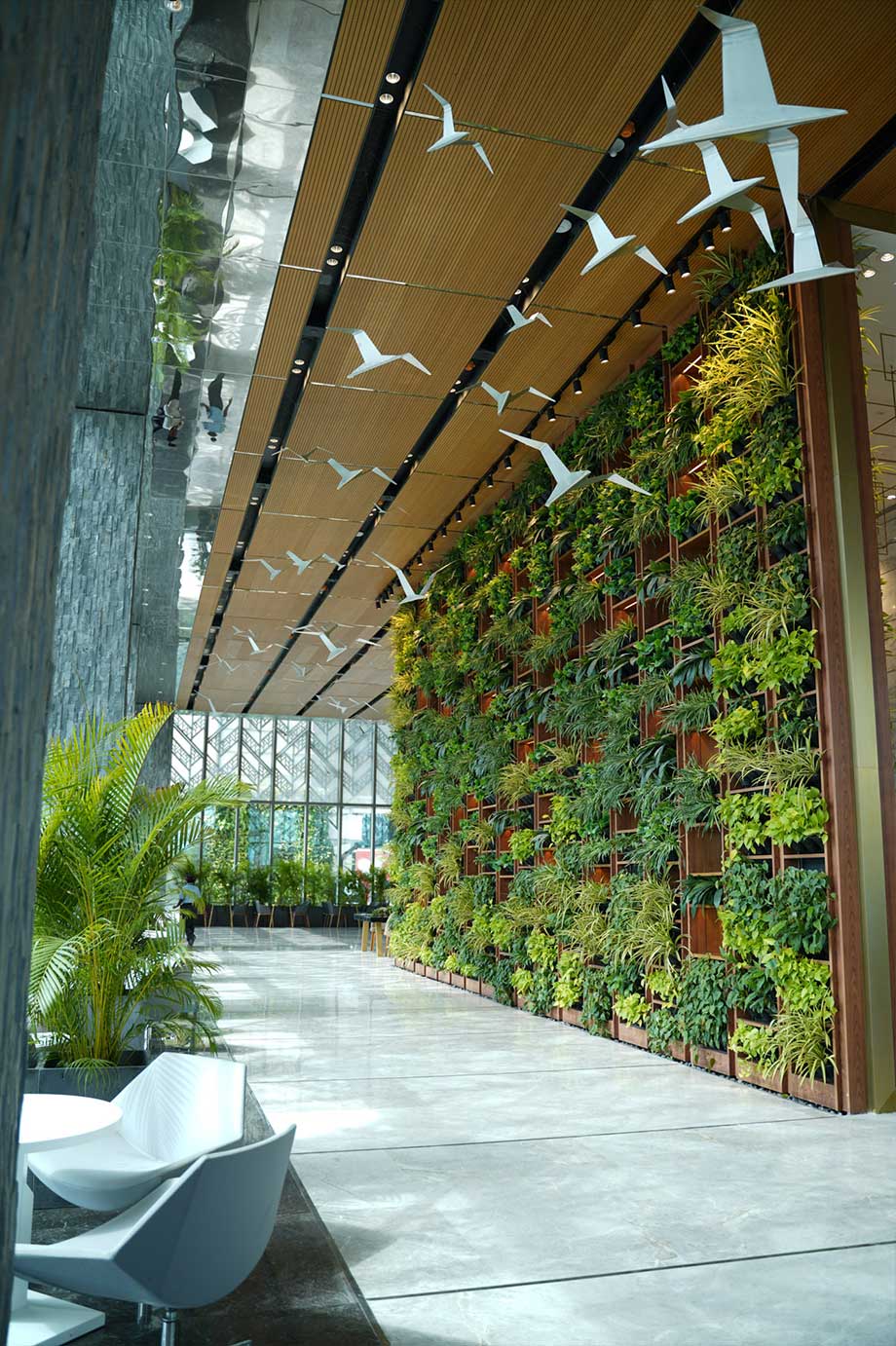
Nature-inspired green corners foster well-being.
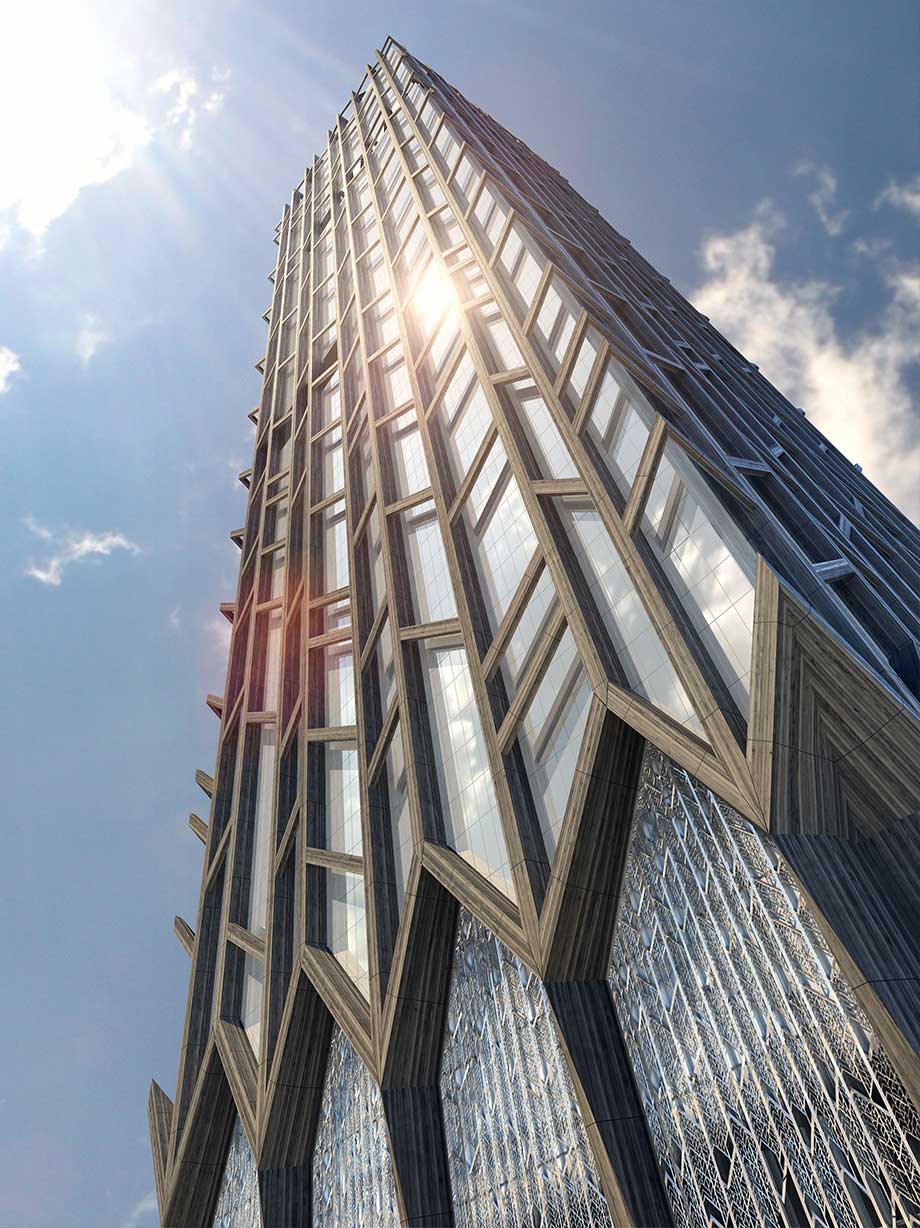
Lodha Excelus at New Cuffe Parade, Mumbai is L E ED Gold-rated business centre.
Coming home to the office
As workdays extend beyond the traditional 9 to 5, employees want a home away from home. Enter the age of Resimercial design, a concept that blends the institutional formality of commercial aesthetics with the warmth of residential elements. Employed by powerhouse brands such as Microsoft, Google and Airbnb, the style has proved to positively impact employee retention, productivity and creativity. It’s about giving employees a choice of environments. Lobbies, like drawing rooms, have a warm personal feel. The industrial canteen has been replaced by trendy cafes and pantries, stocked with health foods. Work pods and nooks channel the quietude of the home study. And the game room is where everyone gathers to unwind. Much like high-end residential complexes, offices are often replete with gyms, swimming pools, kickboxing rings, and even cycles at desks, offering employees a more holistic experience.
The people-centric approach
While evidence shows a correlation between design and workplace wellness, Usher reminds us that it addresses the issue too far downstream.”We have become excellent mitigators yet terrible investigators. It’s about people being excellent to each other. That’s where we deal with stress and remove the need for coping strategies,” he says. Experts agree that the people centric approach ought to be systemic with programs and policies that further enable workplace design.Gramoli stresses on the human connection of all We Work initiatives.
The Wellness Wednesdays’ program, for instance, offers members fitness classes ranging from yoga to Zumba. And Monday blues are kept at bay, courtesy a complimentary breakfast. At Mercer | Mettl, corporate activities are tailored for different personality types; individual working style is encouraged, with minimal micromanaging of staff. Incentive schemes urge employees to avail of wellness perks such as health camps. Other organizations are widening their network of doctors, so more employees can benefit from medical insurance without the stress of switching current healthcare providers. Summing it up, Gupta says, “Wellness and employee engagement go hand-in-hand. When an employee is happy with their job, it positively affects their health. When an employee is healthy and feeling their best, mentally and physically, They’ll feel happier in the workplace, which automatically results in improved productivity, strengthening company culture, reduced burnout and lower attrition.”
Experiential spaces: As time-out becomes as important as time in, workspaces are incorporating relaxation and recreational options into the office plan. Examples include: Salons and spas, meditation nooks, yoga studios, rock climbing walls and espresso bars.
Third spaces: The Third Space is the one between the desk and meeting room that caters to more agile work practice. These areas usually sport a lounge-like design, replete with natural lighting, relaxed seating and maybe a coffee bar.
Collaborative spaces: Not your conventional meeting room, they have facilities for a team of three or four to work together.
Organic spaces: Biophilic office design is a global t rend. A variety of natural finishes and unusual material combinations lend a playful touch to otherwise streamlined la y outs. Also common are nature-inspired green corners that foster wellbeing, for instance living walls or vertical gardens and lands caped gardens with seating nooks. Acoustic panels are used to drown out the noise
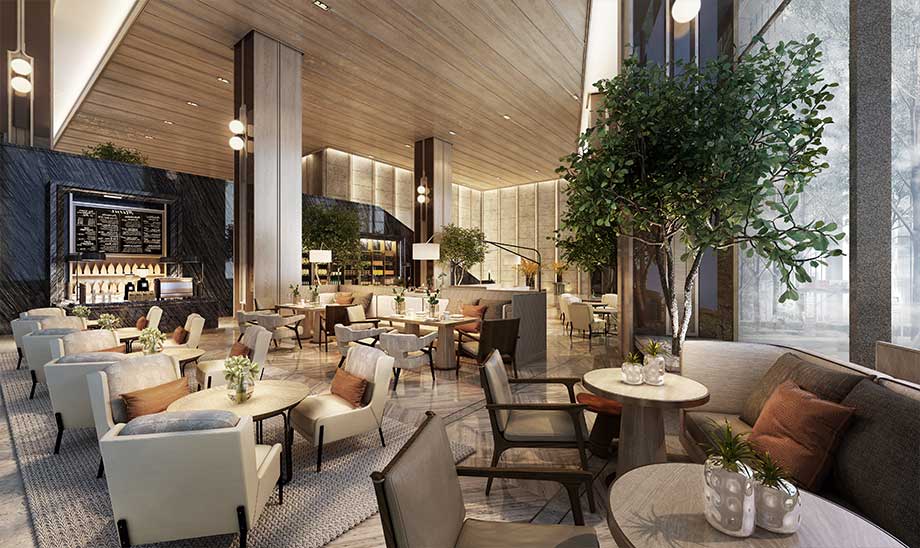
Flexible spaces: Good workplace design must offer a variety of ‘activity settings’ that are accessible to all. Tech smart spaces that account for communication needs are a must. These include everything, from basic po wer outlets to video conferencing technology and wireless charging stations.